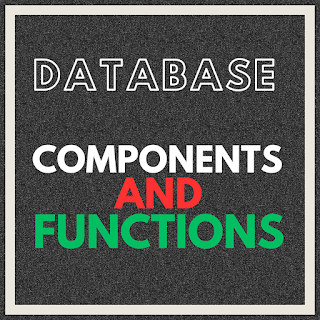Gain a comprehensive understanding of databases and their components. Explore data modeling, management functions, security measures, and query optimization. Empower your data-driven initiatives with our exclusive guide.
Databases lie at the heart of modern information systems, serving as the backbone for storing, managing, and retrieving data efficiently. Understanding the main components and functions of databases is crucial for organizations and individuals seeking to harness the power of data effectively. This comprehensive guide will delve into the intricacies of databases, shedding light on their essential components and functions.
Data Modeling and Design:
Data modeling involves the process of structuring and organizing data to represent real-world entities and their relationships accurately. It encompasses conceptual, logical, and physical design phases. Conceptual design focuses on high-level entities and relationships, while logical design involves translating conceptual models into database schemas. Physical design determines the storage structures and optimization techniques to enhance performance.
Data Definition Language (DDL):
DDL is a subset of SQL (Structured Query Language) used to define and manage the database schema. It includes commands such as CREATE, ALTER, and DROP, allowing users to create tables, define relationships, modify existing structures, and delete database objects.
Data Manipulation Language (DML):
DML comprises SQL statements used to interact with the data stored in the database. It includes commands like SELECT, INSERT, UPDATE, and DELETE, enabling users to query, insert, modify, and delete data records within the database.
Database Management System (DBMS):
A DBMS is a software system that enables the management of databases. It provides an interface for users to interact with the database, ensures data integrity, handles concurrency control, enforces security measures, and manages the storage and retrieval of data efficiently. Popular DBMS options include MySQL, Oracle, Microsoft SQL Server, and PostgreSQL.
Tables and Relationships:
Tables form the fundamental unit of organization within a database. They consist of rows (also known as records or tuples) and columns (also known as attributes). Relationships between tables establish connections and dependencies, enabling data retrieval through queries and ensuring data integrity through constraints such as primary keys and foreign keys.
Indexing:
Indexing enhances the speed and efficiency of data retrieval operations by creating index structures that facilitate quick access to specific data values. Indexes are created on selected columns and enable faster searching, sorting, and filtering of data. However, the trade-off is increased storage requirements and potentially slower data insertion and update operations.
Data Integrity and Constraints:
Data integrity ensures the accuracy, consistency, and reliability of data within a database. Constraints are rules and conditions applied to the data to maintain its integrity. Common types of constraints include primary keys (uniquely identify records), foreign keys (establish relationships between tables), and check constraints (validate data based on predefined conditions).
Data Security:
Data security is of paramount importance to protect sensitive information stored in databases. Access control mechanisms, such as user authentication and authorization, are implemented to ensure that only authorized individuals can access and modify data. Encryption techniques can be applied to secure data at rest and in transit, protecting it from unauthorized access or interception.
Data Backup and Recovery:
Regular data backups are crucial to prevent data loss in the event of hardware failures, software errors, or disasters. Database administrators establish backup strategies and schedules, including full backups, differential backups, and incremental backups. Recovery mechanisms allow for the restoration of data to a previous state in case of data corruption or accidental deletions.
Query Optimization and Performance:
Optimizing query performance is essential for efficient data retrieval. DBMSs employ query optimization techniques such as query rewriting, indexing, caching, and parallel processing to improve query execution time. Performance tuning involves analyzing query execution plans, identifying bottlenecks, and making necessary adjustments to enhance overall database performance.
Conclusion:
Databases serve as the backbone of data management, providing organizations with a structured and efficient means to store, manage, and retrieve data. Understanding the main components and functions of databases, from data modeling and design to query optimization and performance tuning, empowers users to leverage the power of data effectively. By implementing robust database systems, organizations can enhance decision-making, streamline operations, and unlock valuable insights from their data assets. Embrace the world of databases and unleash the full potential of your data-driven endeavors.
 Reviewed by Smart Info
on
June 27, 2023
Rating:
Reviewed by Smart Info
on
June 27, 2023
Rating:








No comments: